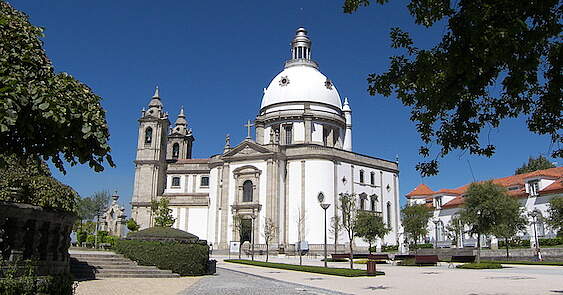
Portugal's devotion to Mary started at the same time as the birth of this nation, in the 12th century. Alfonso, founder of the kingdom and first king of Portugal, placed his country under the protection of Our Lady by a vow, made with the consent of his vassals and signed in the cathedral of Lamego, on April 28, 1142. This date is considered to be the baptism of Portugal, which from then on was called Terra de Santa Maria.
All the conquests of the founder-king were undertaken under the banner of Mary, and in each city retaken from the Moors, the Virgin was enthroned as its Patroness, while the people began building a church dedicated to her.
On March 25, 1646, a royal decree was issued ratifying the decision of the Cortes to name Our Lady of the Immaculate Conception as the patroness of Portugal, in gratitude for the nation's regained independence, in the octave of December 8, 1640. From that point on, all the major Portuguese institutions, including the universities, decided to defend the doctrine of the Immaculate Conception... two centuries before the proclamation of the dogma by the Church in 1854!
In 1863, while an anticlerical spirit was raging in Portugal, the people built the shrine of Our Lady of Sameiro, near the city of Braga. This shrine-basilica is the first Portuguese church to be consecrated to the dogma of the Immaculate Conception, proclaimed in 1854. Today it is one of the most important places of pilgrimage in Portugal.
In 2004, the national celebrations for the 150th anniversary of the proclamation of the dogma of the Immaculate Conception took place in this shrine and for this occasion, on December 8, the "Golden Rose", offered by Pope John Paul II, was given to the Shrine of Sameiro.
The shrine attracts tens of thousands of pilgrims every year from the first Sunday in June to the last Sunday in August.
Adapted and translated from: Marian Encyclopedia